Aston Martin is a British manufacturer of luxury sports cars and grand tourers, founded in 1913. The company gained prominence under David Brown in the mid-20th century, becoming synonymous with high-end grand touring vehicles. A significant part of Aston Martin's brand recognition stems from its association with the James Bond franchise, particularly the iconic DB5 model featured in the 1964 film *Goldfinger*. Today, Aston Martin's cars are considered British cultural icons, representing luxury and high performance.
1908: First Aston Martin Car
Around 1908, the first car to be named Aston Martin was created by Lionel Martin using a four-cylinder Coventry-Simplex engine fitted to a 1908 Isotta Fraschini chassis.
1913: Founding of Aston Martin
In 1913, Lionel Martin and Robert Bamford founded Aston Martin, a British manufacturer of luxury sports cars and grand tourers.
1914: Chassis 1914 Development
In 1914, chassis number 1914 was built and later developed as the Green Pea racing car.
March 1915: First Car Production
In March 1915, Aston Martin produced their first car at Henniker Mews in Kensington.
1915: Chassis 1915 Development
In 1915, chassis number 1915 was built and became the Razor Blade record car.
1916: Chassis 1916 Development
In 1916, chassis number 1916 was built and later developed as the Halford Special.
1920: Bamford Leaves Bamford & Martin
In 1920, Bamford left Bamford & Martin, which was revitalized with funding from Louis Zborowski.
1920: Bamford Leaves
In 1920, Bamford left Bamford & Martin.
1922: French Grand Prix Competition
In 1922, Bamford & Martin produced cars to compete in the French Grand Prix, subsequently setting world speed and endurance records at Brooklands.
1924: Bamford & Martin Bankruptcy
In 1924, Bamford & Martin went bankrupt and was bought by Dorothea, Lady Charnwood.
1925: Martin Forced to Sell
In 1925, Aston Martin faced financial difficulties again, and Martin was compelled to sell the company.
1926: Bertelli Era Begins
In 1926, Bertelli became the technical director and designer of all new Aston Martins, which were known as "Bertelli cars".
1932: Financial Rescue by Lance Prideaux Brune
In 1932, Aston Martin faced financial problems and was rescued for a year by Lance Prideaux Brune.
1936: Focus on Road Cars
In 1936, Aston Martin decided to concentrate on road cars, producing only 700 vehicles until World War II halted production.
1937: End of Bertelli Era
In 1937, Bertelli's tenure as the technical director and designer of Aston Martin cars came to an end.
1947: David Brown Acquisition
In 1947, David Brown Limited acquired Aston Martin, placing it under the control of its Tractor Group, and also acquired Lagonda.
April 1950: Planned Production of DB2
In April 1950, Aston Martin announced planned production of their Le Mans prototype, to be called the DB2.
1953: Release of DB2/4
In 1953, Aston Martin released the DB2/4 model.
1954: Tadek Marek Engine Design
From 1954 the six-cylinder engines were designed by Tadek Marek.
1955: Aston Martin Buys Tickford
In 1955, Aston Martin bought Tickford, their in-house coachbuilder.
1955: Release of DB2/4 MkII
In 1955, Aston Martin released the DB2/4 MkII model.
1955: Start of Production at Newport Pagnell
Production at the Newport Pagnell plant began in 1955, marking a significant era for Aston Martin's manufacturing history.
1956: Aston Martin DBR1/1
In August 2017, a 1956 Aston Martin DBR1/1 sold at a Sotheby's auction at the Pebble Beach, California Concours d'Elegance for US$22,550,000, making it the most expensive British car ever sold at an auction, according to Sotheby's. The car had previously been driven by Carroll Shelby and Stirling Moss.
1957: Release of DB Mark III
In 1957, Aston Martin released the DB Mark III model.
1958: Release of DB4
In 1958, Aston Martin released the Italian-styled 3.7 L DB4.
1959: Formula One Constructor Participation
Aston Martin participated as a Formula One constructor in 1959 and 1960 entering six races over the two years but failing to score any points.
1960: Formula One Constructor Participation
Aston Martin participated as a Formula One constructor in 1959 and 1960 entering six races over the two years but failing to score any points.
1962: 1962 Aston Martin DB4 GT Zagato sold for US$14,300,000
In 2015, a 1962 Aston Martin DB4 GT Zagato was sold for US$14,300,000 in New York.
1963: Release of DB5
In 1963, the DB4 yielded the famous Aston Martin DB5.
1963: 1963 Aston Martin DP215 sold for US$21,455,000
In August 2018, a 1963 Aston Martin DP215 was sold for US$21,455,000.
1964: James Bond and the DB5
In 1964, the Aston Martin DB5 gained prominence through its use by the fictional character James Bond in the film "Goldfinger".
1965: Release of DB6
In 1965, Aston Martin stayed true to its grand touring style with the DB6.
1965: End of Tadek Marek Engine Design
In 1965, the six-cylinder engines designed by Tadek Marek were no longer used.
1967: Release of DBS
In 1967, Aston Martin continued its grand touring tradition with the DBS.
1972: End of DBS Production
In 1972, Aston Martin ceased production of the DBS.
1972: David Brown Pays Off Debts
In 1972, David Brown paid off all of Aston Martin's debts and handed it to Company Developments for £101.
1974: Aston Martin into Receivership
At the end of 1974, Aston Martin fell into receivership due to a worldwide recession, lack of working capital, and difficulties meeting California's exhaust emission requirements.
April 1975: Business Sold to New Owners
In April 1975, the business was sold for £1.05 million to North American businessman Peter Sprague, Toronto hotelier George Minden, and London businessman Jeremy Turner.
September 1975: Factory Re-Opens
In September 1975, the factory re-opened under its new owner as Aston Martin Lagonda Limited with 100 employees.
January 1976: AML Reveals Car Orders
In January 1976, AML revealed it held orders for 150 cars for the US, 100 for other markets, and 80 from a Japanese importing agency.
1977: Introduction of V8 Vantage
In 1977, Aston Martin introduced the V8 Vantage.
1978: Introduction of Volante
In 1978, Aston Martin introduced the convertible Volante.
July 1980: Workforce Cutback
In July 1980, Aston Martin Lagonda cut back its workforce by more than 20%, making 450 people redundant, due to a recession.
1980: Introduction of Bulldog
In 1980, Aston Martin introduced the one-off Bulldog styled by William Towns.
1980: Gauntlett Buys Stake in Aston Martin
In 1980, Victor Gauntlett bought a 12.5% stake in Aston Martin for £500,000 via Pace Petroleum.
January 1981: Sale to Victor Gauntlett
In January 1981, Alan Curtis and Peter Sprague announced the sale of Aston Martin Lagonda to Victor Gauntlett of Pace Petroleum.
1981: Pace and CHI Take Over
At the beginning of 1981, Pace Petroleum and CHI took over as joint 50/50 owners of Aston Martin, with Gauntlett as executive chairman.
1982: Royal Warrant Granted
In 1982, Aston Martin was granted a Royal Warrant of Appointment by the Prince of Wales.
1982: All-Time Low Production Cars
In 1982, sales of Aston Martin production cars were at an all-time low, with only 30 cars produced.
September 1983: Sale of Hays/Pace to Kuwait Investment Office
In September 1983, Gauntlett agreed to sell Hays/Pace to the Kuwait Investment Office as Aston Martin required more investment.
1983: Tickford-engined Nimrod
In 1983, the Tickford-engined Nimrod Group C car owned by AMOC President Viscount Downe, finished third in the Manufacturers Championship.
1984: 10,000th Car Built
In 1984, Aston Martin built its 10,000th car.
1986: James Bond Returns to Aston Martin
In 1986, Gauntlett negotiated the return of the fictional British secret agent James Bond to Aston Martin, with his personal Vantage used in "The Living Daylights".
September 1987: Ford Buys Stake in Aston Martin
In September 1987, Ford bought a 75% stake in Aston Martin after discussions between Walter Hayes and Victor Gauntlett.
1987: Ford Builds Stake in Aston Martin
Ford began building a stake in Aston Martin in 1987, setting the stage for its full acquisition later on.
1988: Introduction of the Virage Range
In 1988, Aston Martin finally retired the ancient V8 and introduced the Virage range.
1989: Return to sports car racing
In 1989, Aston Martin, under Gauntlett's leadership, returned to sports car racing, though with limited success in Europe.
1990: Engine rule changes and new Volante model launch
In 1990, coinciding with engine rule changes and the launch of the new Volante model, Ford supplied Cosworth engines to the Jaguar racing team due to limited availability.
1991: Ford takes control, Hayes becomes chairman
In 1991, with the DB7 requiring significant engineering, Ford took full control of Aston Martin, and Gauntlett passed the chairmanship to Hayes.
1992: Announcement of the Virage Vantage
In 1992, Aston Martin announced the high-performance variant of the Virage, called the Vantage.
1993: Ford Fully Acquires Aston Martin
In 1993, Ford fully acquired Aston Martin, placing it in the Premier Automotive Group, investing in manufacturing, and increasing production.
1994: New Factory Opens in Bloxham
In 1994, Ford opened a new Aston Martin factory at Banbury Road in Bloxham to manufacture the DB7.
1995: Record Production of 700 Cars
In 1995, Aston Martin achieved a record production of 700 cars, marking a shift from hand-built methods to new manufacturing processes during the Ford era.
1998: 2,000th DB7 Built
In 1998, Aston Martin built the 2,000th DB7, a significant milestone in the production of the model.
1999: Revamp of the DB7 Range with V12 Vantage Models
In 1999, Aston Martin revamped the DB7 range with the addition of more powerful V12 Vantage models.
2001: Introduction of the V12-engined Vanquish
In 2001, Aston Martin introduced the V12-engined flagship model called the Vanquish, which replaced the aging Virage (now called the V8 Coupé).
2002: 6,000th DB7 Built
In 2002, Aston Martin built the 6,000th DB7, exceeding the combined production of all previous DB series models.
December 2003: Aston Martin Announces Return to Motor Racing
In December 2003, Aston Martin announced its return to motor racing in 2005, creating Aston Martin Racing to manage the DBR9 program with Prodrive.
2003: Introduction of V8 Vantage Concept and Opening of Gaydon Factory
In 2003, Aston Martin introduced the V8 Vantage concept car at the North American International Auto Show in Detroit, Michigan, and opened the Gaydon factory, the first purpose-built factory in Aston Martin's history.
2003: Queen's Award for Enterprise
In 2003, Aston Martin received the Queen's Award for Enterprise, recognizing its outstanding contribution to international trade.
October 2004: Establishment of Aston Martin Engine Plant
In October 2004, Aston Martin established the dedicated Aston Martin Engine Plant (AMEP) within the Ford Germany plant in Cologne, to produce high-performance engines.
2004: Introduction of DB9 Volante at Detroit Auto Show
In 2004, Aston Martin introduced a convertible version of the DB9, the DB9 Volante, at the Detroit auto show.
2005: Return to Motor Racing
In 2005, Aston Martin officially returned to motor racing with the DBR9 program, managed by Aston Martin Racing and Prodrive.
2005: Expected Introduction of the Vantage
The V8 Vantage, first shown as a concept in 2003, was expected to have few changes before its introduction in 2005, bringing back the classic V8 engine to allow Aston Martin to compete in a larger market.
August 2006: Ford Considers Divesting Aston Martin
In August 2006, following an internal audit, Ford announced it had engaged UBS AG to sell all or part of Aston Martin at auction, considering divesting parts of its Premier Automotive Group.
2006: V8 Vantage Enters Production
In 2006, the entry-level V8 Vantage sports car entered production at the Gaydon factory, joining the DB9 and DB9 Volante.
March 2007: Consortium Purchases Aston Martin
On 12 March 2007, a consortium led by Prodrive chairman David Richards purchased Aston Martin for £475 million, with Ford retaining a stake in the company.
July 2007: Last Car Rolled Out of Newport Pagnell Plant
On 19 July 2007, the Newport Pagnell plant rolled out its last car, a Vanquish S, after producing nearly 13,000 cars since 1955. The facility was converted to house the Aston Martin Works classic car department.
August 2007: Completion of the East-West Crossing of the Asian Highway
Between June and August 2007, the first east–west crossing of the Asian Highway was completed to demonstrate the V8 Vantage's durability and promote the car in China.
2007: Car sales in 2007
In 2007 Aston Martin sold 7,300 cars.
March 2008: Partnership with Magna Steyr Announced
In March 2008, Aston Martin announced a partnership with Magna Steyr to outsource manufacture of over 2,000 cars annually to Graz, Austria, with Gaydon remaining the focal point for design and engineering.
September 2008: Revival of the Lagonda Marque Announced
On 1 September 2008, Aston Martin announced the revival of the Lagonda marque, with plans to showcase a concept car in 2009 for its 100th anniversary and production cars slated for 2012.
December 2008: Workforce Reduction Announced
In December 2008, Aston Martin announced a workforce reduction from 1,850 to 1,250 due to the economic recession.
2009: Planned Lagonda concept car showcase
In 2009, Aston Martin planned to showcase a concept car to coincide with the Lagonda brand's 100th anniversary.
2010: Rapide Production Begins at Magna Steyr
In 2010, the first four-door Rapide grand tourers rolled out of the Magna Steyr factory in Graz, Austria, where dedicated facilities ensured compliance with Aston Martin's standards.
September 2011: Announcement of Rapide Production Return to Gaydon
In September 2011, it was announced that production of the Rapide would be returned to Gaydon in the second half of 2012, consolidating all of the company's automobile manufacture there.
2011: Issuance of Senior Secured Notes
In 2011, Aston Martin issued £304 million of senior secured notes at 9.25% interest.
December 2012: Investindustrial Acquires Stake in Aston Martin
On 6 December 2012, Investindustrial signed a deal to buy a 37.5% stake in Aston Martin, investing £150 million, as confirmed by Aston Martin on 7 December 2012.
2012: Planned production of Lagonda cars
In 2012, the first production cars for the revived Lagonda marque were slated for production.
2012: Rapide Production Returned to Gaydon
In the second half of 2012, production of the Rapide was returned to Gaydon, restoring all of Aston Martin's automobile manufacture to that location.
April 2013: Bez to leave CEO role
In April 2013, it was reported that Bez would be leaving his role as the chief executive officer to take up a more ambassadorial position within Aston Martin.
December 2013: Deal Signed with Mercedes-Benz Group
In December 2013, Aston Martin signed a deal with Mercedes-Benz Group to supply the next generation of Aston Martin cars with Mercedes-AMG engines and electrical systems.
2013: Car sales in 2013
In 2013 Aston Martin sold 4,200 cars.
2013: David Richards Leaves Aston Martin
In 2013, David Richards left Aston Martin to concentrate on Prodrive.
March 2014: Issuance of "Payment in Kind" Notes
In March 2014, Aston Martin issued "payment in kind" notes of US$165 million, at 10.25% interest, to secure additional investment for new model development.
September 2014: Andy Palmer Appointed New CEO
On 2 September 2014, Aston Martin announced the appointment of Nissan executive Andy Palmer as the new CEO, with Bez retaining a position as non-executive chairman.
2015: 1962 Aston Martin DB4 GT Zagato sold for US$14,300,000
In 2015, a 1962 Aston Martin DB4 GT Zagato was sold for US$14,300,000 in New York.
2015: Efforts to Appeal to Women Increase
Since 2015, Aston Martin has sought to increase its appeal to women as a luxury lifestyle brand. A female advisory panel was established to adapt the design of the cars to the taste of women.
2015: Aston Martin Sought New Customers
Starting from 2015, as sales declined, Aston Martin sought new customers, particularly wealthy female buyers, by introducing concept cars like the DBX SUV and track-focused cars like the Vulcan.
February 2016: Selection of St Athan Site for New Factory
In February 2016, Aston Martin selected a 90-acre site in St Athan, South Wales, for its new factory, featuring existing 'super-hangars' of MOD St Athan.
March 2016: Announcement of DB11 with Mercedes-Benz Technology
In March 2016, the DB11, announced at the Geneva Motor Show, became the first model to feature Mercedes-Benz electronics and Mercedes-AMG V8 engines as part of the partnership.
September 2016: Aston Martin AM37 Powerboat Unveiled
In September 2016, a 37-foot-long Aston Martin speedboat was unveiled called the Aston Martin AM37 powerboat.
2016: Loss in 2016
In 2016, Aston Martin incurred a loss of £163 million.
2016: Increase in Pre-Tax Losses
It was reported that Aston Martin's pre-tax losses for 2016 increased by 27% to £162.8 million, marking the sixth consecutive year of losses.
April 2017: Commencement of Construction Work at St Athan
In April 2017, construction work began to convert the hangars at the new Aston Martin factory site in St Athan, South Wales.
August 2017: 1956 Aston Martin DBR1/1 Sells for Record Price
In August 2017, a 1956 Aston Martin DBR1/1 sold at a Sotheby's auction at the Pebble Beach, California Concours d'Elegance for US$22,550,000, making it the most expensive British car ever sold at an auction, according to Sotheby's. The car had previously been driven by Carroll Shelby and Stirling Moss.
November 2017: Special Limited Edition Bicycle Unveiled
In November 2017, Aston Martin unveiled a special limited edition bicycle after collaborating with bicycle manufacturer Storck.
May 2018: Project Neptune Submersible Launched
In May 2018, Aston Martin launched a submersible called Project Neptune in partnership with submarine building company Triton Submarines.
July 2018: Volante Vision Concept Unveiled
In July 2018, Aston Martin unveiled the Volante Vision Concept, a luxury concept aircraft with vertical take-off and landing capabilities. Also in July, a Lego version of James Bond's DB5 car was put on sale, and an Aston Martin-branded watch was released in collaboration with TAG Heuer.
August 2018: Plans Announced to Float the Company
In August 2018, Aston Martin announced plans to float the company at the London Stock Exchange as Aston Martin Lagonda Global Holdings plc after reporting a full-year pre-tax profit.
August 2018: 1963 Aston Martin DP215 sold for US$21,455,000
In August 2018, a 1963 Aston Martin DP215 was sold for US$21,455,000.
October 2018: Design and Brand Studio Opens in Shanghai
In October 2018, Aston Martin announced it was opening a design and brand studio in Shanghai.
October 2018: Initial Public Offering on London Stock Exchange
On 3 October 2018, Aston Martin Lagonda Global Holdings plc had its initial public offering on the London Stock Exchange.
June 2019: Opening of the St Athan Factory for DBX Production
In June 2019, Aston Martin opened its new factory in St Athan for the production of its first-ever SUV, the DBX.
December 2019: Official Opening of St Athan Factory
On 6 December 2019, Aston Martin's St Athan factory was officially opened.
January 2020: Racing Point F1 Team to Be Rebranded as Aston Martin
In January 2020, it was announced that the Racing Point F1 Team would be rebranded as Aston Martin for the 2021 season, due to funding investment led by Racing Point owner Lawrence Stroll.
January 2020: Lawrence Stroll Leads Consortium to Acquire Stake
On 31 January 2020, it was announced that Lawrence Stroll was leading a consortium, Yew Tree Overseas Limited, who will pay £182 million in return for 16.7% stake in Aston Martin.
March 2020: Stroll Increases Stake in Aston Martin
In March 2020, Lawrence Stroll increased his stake in Aston Martin to 25%.
May 2020: Andy Palmer Steps Down as CEO
In May 2020, Andy Palmer stepped down as CEO of Aston Martin. He was succeeded by Tobias Moers of Mercedes-AMG starting 1 August, with Keith Stanton as interim chief operating officer.
June 2020: Company Announces Job Cuts
In June 2020, Aston Martin announced it would cut 500 jobs due to poor sales, which were attributed to the COVID-19 pandemic lockdown.
October 2020: Mercedes Increases Stake in Aston Martin
In October 2020, Mercedes confirmed it would increase its holding in Aston Martin "in stages" from 5% to 20%, in return for access to Mercedes-Benz hybrid and electric drivetrain technologies.
November 2020: "Astongate" Controversy Emerges
In November 2020, Aston Martin was accused of using a report published by Clarendon Communications to spread disputed information about electric vehicles. The report, which cited a study by Polestar, stated that electric vehicles would need to be driven 48,000 miles before they would have lower overall CO2 emissions than a petrol car, which was disputed by electric vehicle researcher Auke Hoekstra.
2020: Full Production Begins at St Athan
Full production at the St Athan factory was scheduled to begin in the second quarter of 2020, employing around 600 people, rising to 750 at peak production.
March 2021: Plans for Electric Vehicles Announced
In March 2021, executive chairman Lawrence Stroll announced that Aston Martin planned to build electric vehicles by 2025.
March 2021: Aston Martin AMR21 Unveiled
In March 2021, the Aston Martin AMR21 was unveiled and became Aston Martin's first Formula One car after a 61-year absence from the sport. The team switched their racing colour of BWT pink to a modern iteration of Aston Martin's British racing green.
May 2022: Amedeo Felisa Appointed New CEO
In May 2022, Amedeo Felisa, aged 76, was named the new chief executive officer of Aston Martin, replacing Tobias Moers. Roberto Fedeli was also announced as the new chief technical officer.
July 2022: Saudi Arabia's PIF Takes Stake in Company
In July 2022, Saudi Arabia's Public Investment Fund (PIF) took a stake in Aston Martin through a £78 million equity placing and a £575 million rights issue, giving it two board seats in the company.
September 2022: Geely Acquires Stake in Company
In September 2022, Chinese automaker Geely acquired a 7.6% stake in Aston Martin.
December 2022: Yew Tree Consortium Increases Stake
In December 2022, Stroll and the Yew Tree consortium increased their stake in Aston Martin to 28.29%.
May 2023: Geely Increases Stake to 17%
In May 2023, Geely increased its stake in Aston Martin to 17%, becoming the third-largest shareholder.
June 2023: Agreement Signed with Lucid Motors
In June 2023, Aston Martin signed an agreement with Lucid Motors to supply electric motors, powertrains, and battery systems for its upcoming range of fully electric cars. Aston Martin will provide cash payments and a 3.7 percent stake in its company to Lucid in return.
September 2023: Yew Tree Consortium Increases Stake
In September 2023, the Yew Tree consortium increased their stake in Aston Martin by 3.27% to 26.23%.
October 2023: Aston Martin to Compete in FIA and IMSA Championships
In October 2023, Aston Martin announced it would compete in the FIA World Endurance Championship and IMSA SportsCar Championship in 2025.
March 2024: Adrian Hallmark Appointed New CEO
In March 2024, Aston Martin announced Adrian Hallmark as its new CEO beginning 1 October 2024, replacing Amedeo Felisa.
April 2024: Electric Vehicle Production Delayed
In April 2024, Aston Martin announced that it would push back production of its first electric vehicle to 2027.
September 2024: Profit Warning Issued
In September 2024, Aston Martin issued a profit warning, citing a fall in demand in China.
October 2024: Adrian Hallmark Begins as CEO
In March 2024, Aston Martin announced Adrian Hallmark as its new CEO beginning 1 October 2024, replacing Amedeo Felisa.
November 2024: Another Warning Issued with New Shares and Debt
In November 2024, Aston Martin issued another warning following a minor delay in the deliveries of their Valiant model. In response, they announced they would issue new shares and debt totaling £210 million.
February 2025: Production of First Electric Vehicle Delayed Again
In February 2025, CEO Adrian Hallmark announced that Aston Martin would again push back production of its first electric vehicle to 2030.
March 2025: Yew Tree Consortium to Inject Additional Funds
On 31 March 2025, the Yew Tree Consortium is set to inject an additional £52.5 million into Aston Martin by purchasing 75 million shares at 70 pence per share, increasing its stake to 33%.
2025: Electric Vehicles Planned
In March 2021, Aston Martin executive chairman Lawrence Stroll stated that the company plans on building electric vehicles by 2025.
2025: Aston Martin to Compete in FIA and IMSA Championships
In October 2023, Aston Martin announced it would compete in the FIA World Endurance Championship and IMSA SportsCar Championship in 2025.
2027: Electric Vehicle Production Delayed to 2027
In April 2024, Aston Martin announced that it would push back production of its first electric vehicle to 2027.
2030: Production of First Electric Vehicle Delayed to 2030
In February 2025, CEO Adrian Hallmark announced that Aston Martin would again push back production of its first electric vehicle to 2030.
2030: UK's Combustion Engine Vehicle Ban
In late 2020, Aston Martin was involved in a controversy in which it was accused of using a report to spread disputed information about electric vehicles in the wake of the UK's declaration to end the sale of combustion engine vehicles by 2030.
Mentioned in this timeline
Lego is a line of plastic construction toys created by...
California is a U S state on the Pacific Coast...
Saudi Arabia officially the Kingdom of Saudi Arabia KSA is...

A submarine is a watercraft capable of independent operation underwater...
Germany officially the Federal Republic of Germany is a Western...
World War II - was a global conflict between the...
Trending
Jeremiyah Love is an American college football running back currently playing for the Notre Dame Fighting Irish He is known...

8 months ago CJ McCollum's Uneven Scoring Night and Climb in NBA History
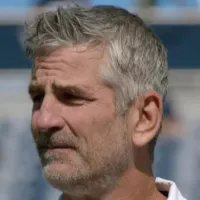
54 minutes ago Frank Reich Returns to Carolina, Set to Face Bill Belichick Once Again.

Nikki Glaser is a prominent American stand-up comedian actress and television host She is best known for hosting 'Not Safe...
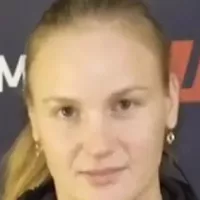
Valentina Shevchenko born in is a Kyrgyz and Peruvian professional mixed martial artist former Muay Thai fighter and kickboxer She...
Jonah Coleman is an American college football running back currently playing for the Washington Huskies He transferred to Washington after...
Popular
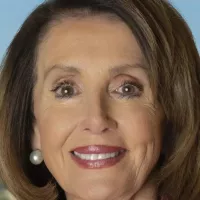
Nancy Pelosi is a prominent American politician notably serving as...
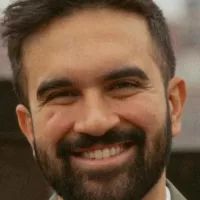
Zohran Kwame Mamdani is an American politician currently serving as...
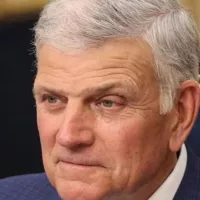
William Franklin Graham III commonly known as Franklin Graham is...

Chuck Schumer is the senior United States Senator from New...
Nicholas J Fuentes is a far-right political commentator and activist...
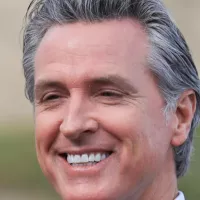
Gavin Newsom is an American politician and businessman currently serving...